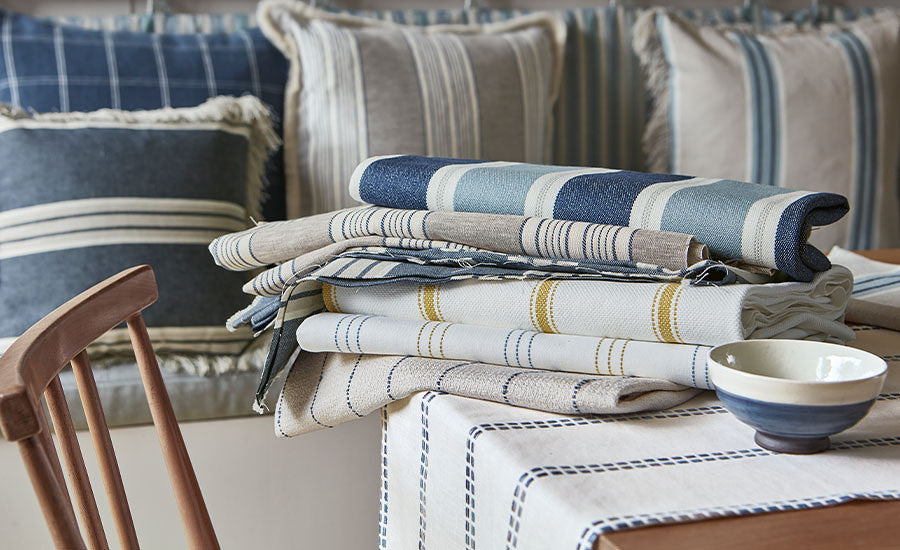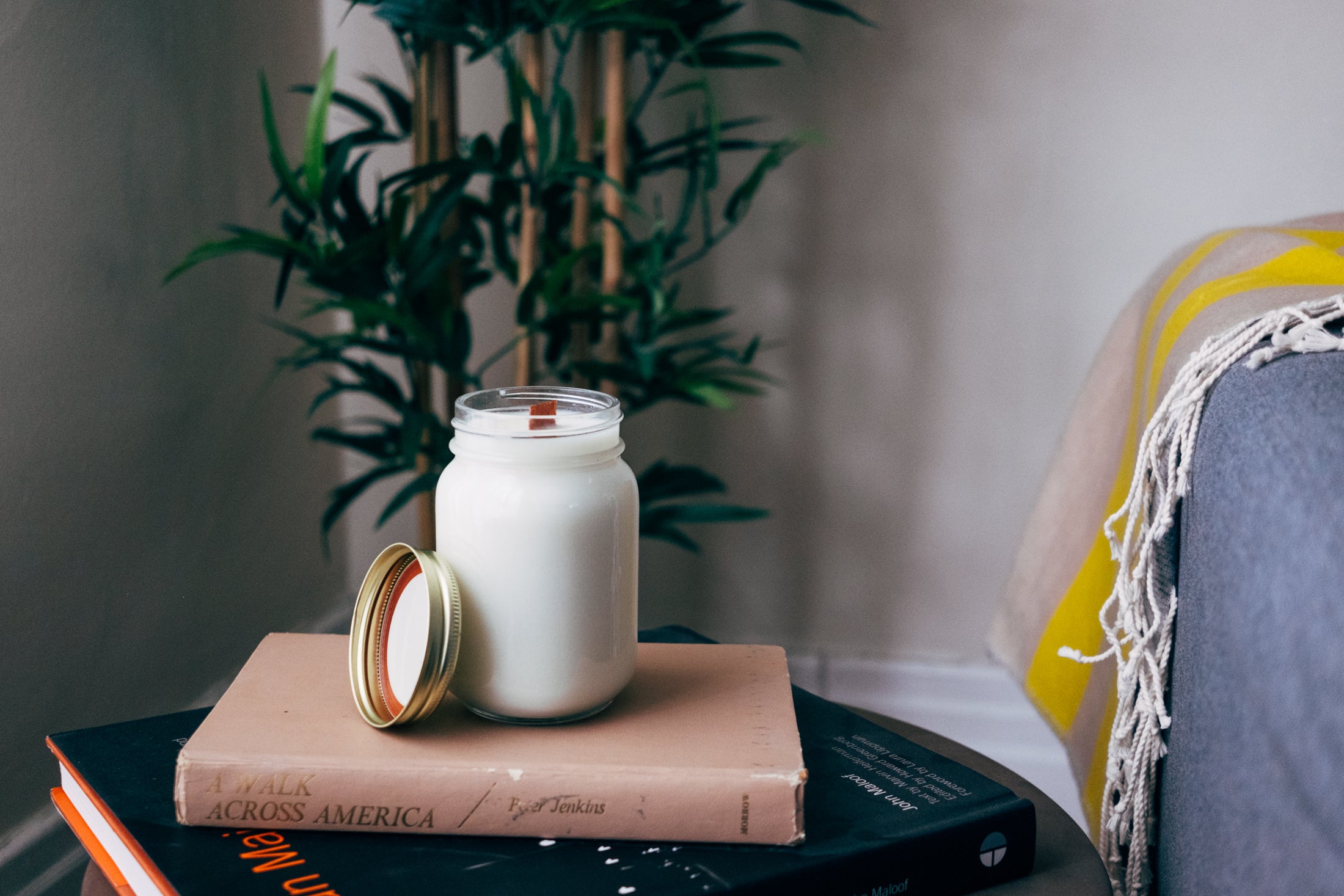For the Love of Stripes…Their Timeless Appeal in Interior Design

We have been asked if we only use stripes – no is the quick reply to that but I thought it was about time we delve into the wonderful world of stripes in interior design. Whether you’re redecorating your home or just curious about the latest trends, stripes are a classic that never go out of style and along with a ruffle edge, are currently seeing a surge in popularity.
“…fast forward to 2024, and people want their homes to make a visual statement again: “After several years of quiet plaster and monochromatic themes in design, I think people are craving a bit more visual impact and stripes are a natural first choice. Stripes give that punch but are still relatively easy to work with stylistically,” says Tatum Kendrick of Tatum Kendrick Design. Heidi Callier agrees: “We’re all craving a bit more fun with design this year, and stripes are an easy way to punch up an upholstered piece, soft accessories, and wall coverings. Stripes typically add that masculine detail I’m looking for,” she says. “It perfectly balances out a more feminine print I’ve used in a space, like a favourite chintz or floral.” Vogue.

Let’s take a little journey through the history of stripes and explore how you can incorporate this timeless pattern into your own space.
A Brief History of Stripes
Stripes have been around for centuries; back in the early 1300s, a French cobbler was said to be sentenced to death for wearing striped clothing. During the Middle Ages, striped fabric was used to identify social outcasts. Prostitutes, criminals, jugglers, clowns, hangmen were all ordered by law to wear striped clothing so that they could easily be identified. Stripes symbolised something sinister and untrustworthy, you stood out in a stripe.
However, the perception of stripes shifted dramatically by the mid-1800s. Blue and white striped shirts became the official uniform for sailors in the French Navy. This was an appropriate pattern since sailors were considered to be the lowest level of the Navy. But the French Navy had very specific requirements for these shirts; the shirts had to have 21 white stripes (each 20mm wide) and 20 or 21 indigo blue stripes (each 10mm wide) on the front and back. They also had to have 15 white stripes and either 14 or 15 blue stripes on the sleeves, which had to be three-quarters in length to avoid them peeping out from jacket sleeves. These sailor stripes became known as marinière - a term still used to describe stripey pieces in fashion today.
Originally hand knitted, the wool so tight that the fabric became waterproof, the marinière was indispensable to the fishermen needing protection from the wind and sea. When Coco Chanel visited the northern coast of France, she fell in love with these now fashion classics. She was photographed wearing a blue and white striped shirt in 1913, until then, these shirts were only ever worn by (fisher)men.

In the 1920s, striped fabric became a popular pattern for women’s activewear. This was around the time when women were given permission to participate in some sports. Throughout the Prohibition era, gangsters like Al Capone were often seen sporting striped suits. In the mid-20th century, striped beachwear became a popular trend for men, women, and beach tents - we still have striped deckchairs. Hippies, Punks and Grunge anti-establishment subcultures favoured the design in the 60s, as it's history shows us, it's a real statement. They still, to some degree, portray a sense of rebelliousness—a subtle boldness and daringness. An echo of Je Ne Sais Quoi.
Why Stripes Work So Well
Stripes are incredibly versatile. They can make a small room appear larger or add a dramatic flair to a plain space. Vertical stripes draw the eye upward, creating an illusion of height, which is perfect for low-ceilinged rooms. Horizontal stripes, on the other hand, can make a room feel more expansive.

Image: Nursery at Emilia Wickstead’s London home. Kate Martin. Vogue.
Moreover, stripes are not limited to walls. You can incorporate them into your décor through furniture, rugs, cushions, and even artwork. The possibilities are endless, and that’s what makes stripes so much fun to work with!

Tips for Using Stripes in Your Home
- Start Small: If you’re new to stripes, start with smaller elements like cushions, throws, or lampshades. This way, you can see how they fit into your space without making a huge commitment.
- Mix and Match: Don’t be afraid to mix stripes with other patterns. Florals, polka dots, and even plaids can complement stripes beautifully if done correctly. The key is to stick to a cohesive colour scheme to avoid visual chaos.

- Accent Walls: Consider painting one wall with bold stripes to create a striking focal point. This works particularly well in living rooms, bedrooms, or even bathrooms. Use painter’s tape to ensure crisp, clean lines.
- Colour Play: Experiment with different colours. Classic black and white stripes are always chic, but don’t shy away from vibrant hues or subtle pastels. The colours you choose can set the mood of the room—bold colours for energy and excitement, softer tones for calm and relaxation.
- Textures and Materials: Stripes aren’t just for paint and fabric. Consider striped wallpaper, tiles, or even wooden panelling. Different materials can add depth and interest to your design.

Stripes in Different Rooms
Living Room: Use a striped rug to anchor your seating area or add striped curtains for a pop of pattern. Striped accent chairs can also add a touch of sophistication.
Bedroom: Striped bedding or a headboard can create a cosy yet stylish look. Vertical stripes on the walls can make your bedroom feel taller and more spacious.
Kitchen: Striped tea towels, tablecloths, or even a striped backsplash can bring a fun, contemporary vibe to your kitchen.
Bathroom: Striped shower curtains or towels can liven up a plain bathroom. For a more permanent look, consider striped tiles.

Final Thoughts
Stripes are a fantastic way to add personality and style to any space. They are timeless, versatile and can be tailored to fit any design aesthetic. Whether you’re going for a bold, modern look or something more classic and understated, stripes can help you achieve your design goals.
So, go ahead and embrace the stripes! Have fun experimenting, and remember that design is all about expressing your unique personality. Happy decorating.

